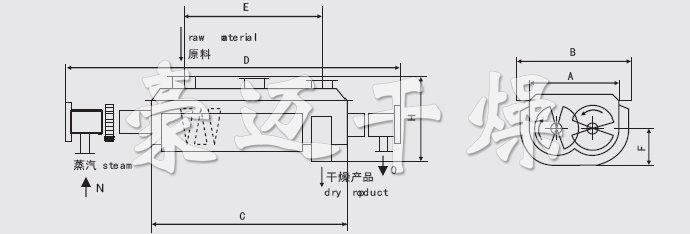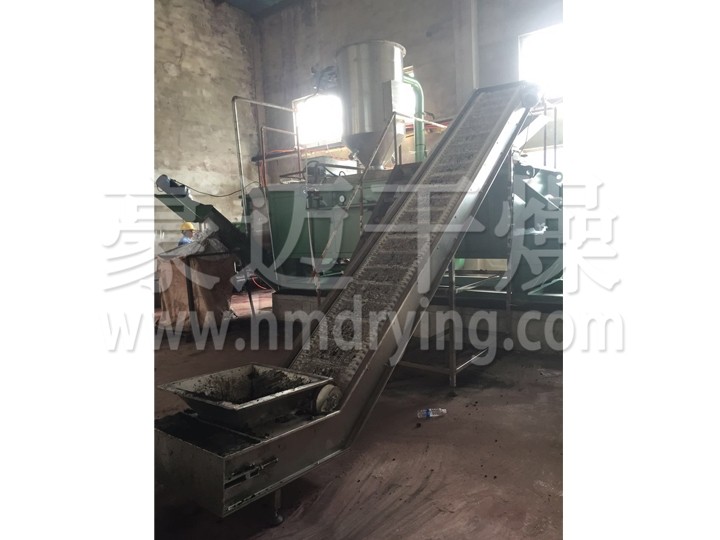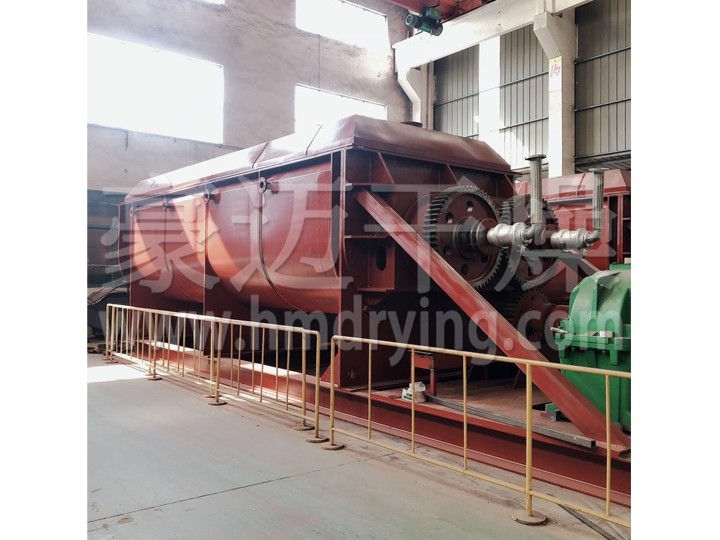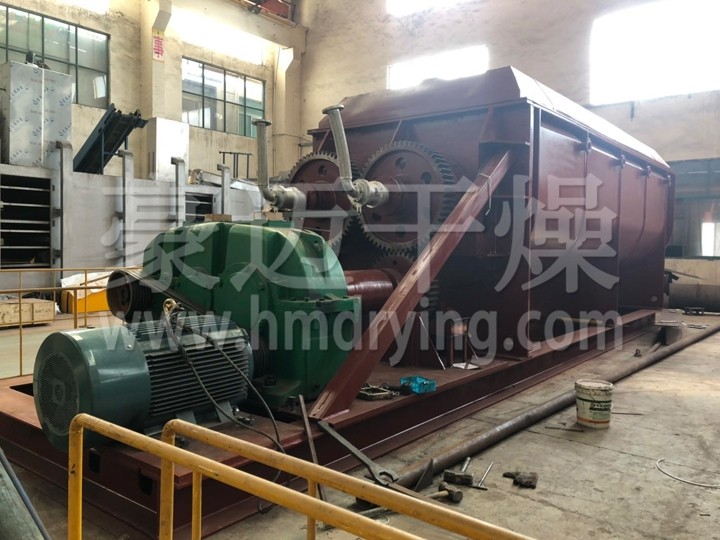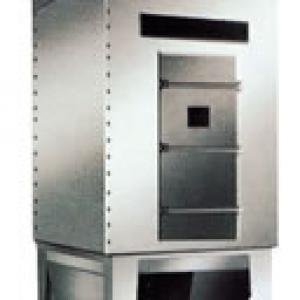Description
Classification: Dye engineering industry
Case overview: with the recovery of the global economy, the construction materials, coatings, paints, plastics, ink and other industries at home and abroad have witnessed rapid growth, and the demand for inorganic pigments has also increased rapidly. With the rapid development of coating industry, inorganic pigment, as one of its main raw materials, has made great progress, in which titanium dioxide and iron oxide account for a large proportion.
Brief introduction of inorganic pigment materials:
Inorganic pigments are oxides of non-ferrous metals or some metal insoluble metal salts. Inorganic pigments can be divided into natural inorganic pigments and artificial inorganic pigments. Natural inorganic pigments are mineral pigments. Pigment made from natural minerals or inorganic compounds. The synthetic inorganic pigment has a complete variety of chromatogram, bright color, pure and strong covering power. With the recovery of the global economy, domestic and foreign building materials, coatings, paints, plastics, inks and other industries have witnessed rapid growth, and the demand for inorganic pigments has also increased rapidly. With the rapid development of coating industry, inorganic pigment, as one of its main raw materials, has made great progress, in which titanium dioxide and iron oxide account for a large proportion.
Application of inorganic pigment:
Inorganic pigments are widely used in coatings, plastics, synthetic fibers, rubber, building materials, stationery, painting pigments, ink and paper.
Overview of inorganic pigment dryer:
The product can indirectly heat or cool paste, granule, powder and paste materials, and can complete the unit operation of drying, cooling, heating, sterilization, reaction, low temperature combustion, etc. The special wedge-shaped agitated heat transfer blade in the equipment has high heat transfer efficiency and self-cleaning function of heat transfer surface.
Working principle of inorganic pigment dryer:
Wedge shaped hollow blades are densely arranged on the hollow shaft, and the hot medium flows through the hollow shaft. The heat transfer area per unit effective volume is very large. The temperature of hot medium ranges from - 40 ℃ to 320 ℃, which can be steam or liquid type, such as hot water, heat transfer oil, etc. Indirect conduction heating, without carrying air to take away heat, heat is used to heat materials. The heat loss is only the heat dissipation to the environment through the insulation layer. The heat transfer surface of wedge blade has self-cleaning function. The relative movement of material particles and the wedge-shaped surface produces a washing effect, which can wash off the attached materials on the wedge-shaped surface, and keep a clean heat-transfer surface during operation. The shell of the pulp dryer is Ω type, and two to four hollow mixing shafts are arranged in the shell. The shell has a sealed end cover and an upper cover to prevent the leakage of material dust.
The heat transfer medium flows through the shell jacket and hollow mixing shaft through the rotary joint. The hollow mixing shaft has different internal structure according to the type of hot medium, so as to ensure good heat transfer effect.
Performance characteristics of inorganic pigment dryer:
Low energy consumption of pulp leaf dryer: due to indirect heating, there is no large amount of air to take away heat, and the outer wall of the dryer is provided with insulation layer, so only 1.2kg water vapor is needed to evaporate 1kg water for slurry material.
The cost of the pulp leaf dryer system is low: the unit effective volume has a huge heat transfer surface, which shortens the processing time and reduces the equipment size. It greatly reduces the building area and building space.
A wide range of materials: different thermal media can be used to process both heat sensitive materials and materials requiring high temperature treatment. Common media are: steam, heat transfer oil, hot water, cooling water, etc.
It can be operated continuously or intermittently, and can be used in many fields.
Small environmental pollution: do not use carrying air, dust material entrainment is very small. The evaporation of solvent is very small, which is easy to handle. Closed circuit circulation can be used for contaminated materials or solvent recovery.
Low operating costs: low wear and maintenance costs. A kind of
Stable operation: due to the special compression expansion mixing effect of the wedge-shaped blade, the material particles fully contact with the heat transfer surface. In the axial range, the gradient of temperature, humidity and mixing degree of the material is very small, thus ensuring the stability of the process.
Inorganic pigment dryer is suitable for materials:
Paddle dryer has been successfully used in food, chemical, petrochemical, dye, industrial sludge and other fields. The heat transfer, cooling and stirring characteristics of the equipment enable it to complete the following unit operations: combustion (low temperature), cooling, drying (solvent recovery), heating (melting), reaction and sterilization. The mixing blade is also the heat transfer surface, which increases the heat transfer area per unit effective volume and shortens the treatment time. The heat transfer surface of wedge blade has the function of self-cleaning. Compression expansion mixing function makes materials mix evenly. In the axial region, the gradient of temperature, humidity and mixing degree is very small. Low temperature combustion can be achieved by using heat transfer oil as hot medium in the blade dryer. For example, calcium sulfate dihydrate (Ca2SO4 · 2H2O) is converted into calcium sulfate hemihydrate (Ca2SO4 · 1 / 22h2o). Sodium bicarbonate (NaHCO3) is converted into soda ash (na2hco3) by calcination. Cooling medium, such as water and cooling brine, can be used for cooling. For example: the pulp leaf type soda cooler used in soda ash industry replaces the old air cooling soda cooler, which saves energy and tail gas treatment equipment and reduces operating costs. Drying, the main function of the equipment, does not use hot air, so that solvent recovery, energy consumption, environmental control in an ideal state of easy treatment. It is especially suitable for solvent recovery, flammable and easy to oxidize heat sensitive materials. It has been widely used in fine chemical industry, petrochemical industry and dye industry. In the axial range, the uniformity of temperature, humidity and mixing degree enables the equipment to be used for heating or melting, or for reaction of some solid materials. It has been successfully used in compound fertilizer and modified starch industry. The pulp leaf dryer can be used to sterilize food and flour. The large heating area in the unit effective volume can quickly heat the material to the sterilization temperature, thus avoiding long-time heating and changing the material quality.
Installation structure diagram:
